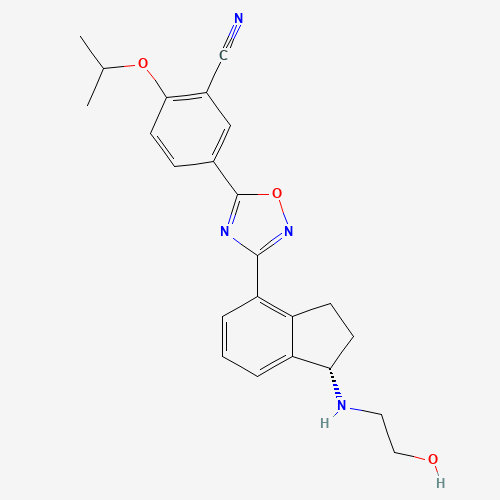| Pharmaceutical Information |
| Drug Name |
Ozanimod |
| Drug ID |
BADD_D02580 |
| Description |
Ozanimod is a once-daily sphingosine 1-phosphate receptor modulator for the treatment of relapsing Multiple Sclerosis (MS) and inflammatory bowel disease. It was developed by Celgene (now acquired by Bristol-Myers Squibb) [L11025] and was approved by the FDA on March 26, 2020.[L12573,L12582] In November 2021, ozanimod was also approved by the European Commission for the treatment of adults with relapsing remitting multiple sclerosis.[L39377,L39382]
MS is a devastating inflammatory disease that often progresses and causes severe neurological, physical, and cognitive effects.[A176474] Inflammatory bowel disease also a chronic inflammatory condition and can cause persistent abdominal pain, diarrhea, bloody stools, and vomiting.[A189336]
In clinical trials, Ozanimod has been shown to be well-tolerated and has resulted in a higher decrease in the rate of MS relapses than with intramuscular [interferon beta-1a], a current standard in MS therapy. Studies involving patients with inflammatory bowel disease have also shown promising results.[A189318,A189342] |
| Indications and Usage |
Ozanimod is indicated for adults in the treatment of relapsing forms of MS, which may include relapsing-remitting disease, clinically isolated syndrome, and active secondary progressive MS.[L12582] |
| Marketing Status |
approved; investigational |
| ATC Code |
L04AA38 |
| DrugBank ID |
DB12612
|
| KEGG ID |
D10968
|
| MeSH ID |
C000607776
|
| PubChem ID |
52938427
|
| TTD Drug ID |
D07EDB
|
| NDC Product Code |
Not Available |
| UNII |
Z80293URPV
|
| Synonyms |
ozanimod | RPC1063 |
|
| Chemical Information |
| Molecular Formula |
C23H24N4O3 |
| CAS Registry Number |
1306760-87-1 |
| SMILES |
CC(C)OC1=C(C=C(C=C1)C2=NC(=NO2)C3=C4CCC(C4=CC=C3)NCCO)C#N |
| Chemical Structure |

|
|
| ADRs Induced by Drug |
|
|
*The priority for ADR severity classification is based on FAERS assessment, followed by the most severe level in CTCAE rating. If neither is available, it will be displayed as 'Not available'.
**The 'Not Available' level is hidden by default and can be restored by clicking on the legend twice..
|
|
|

